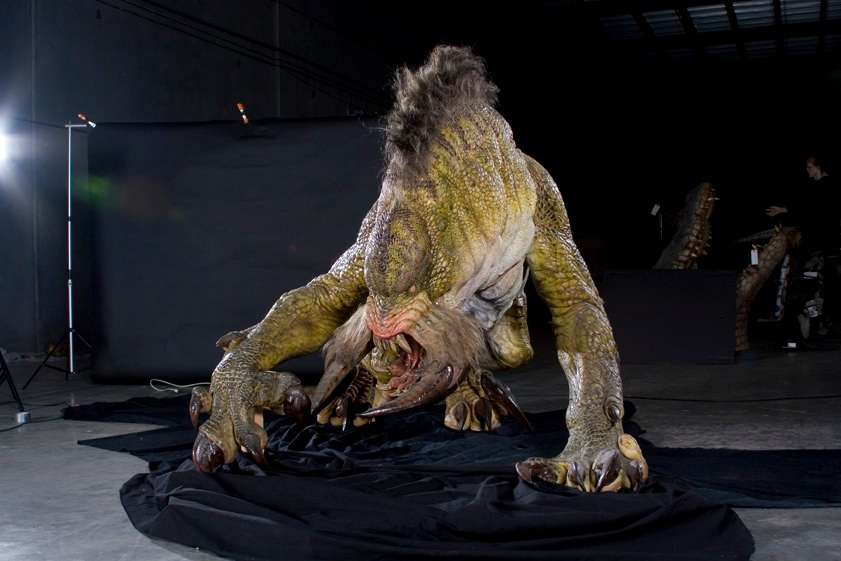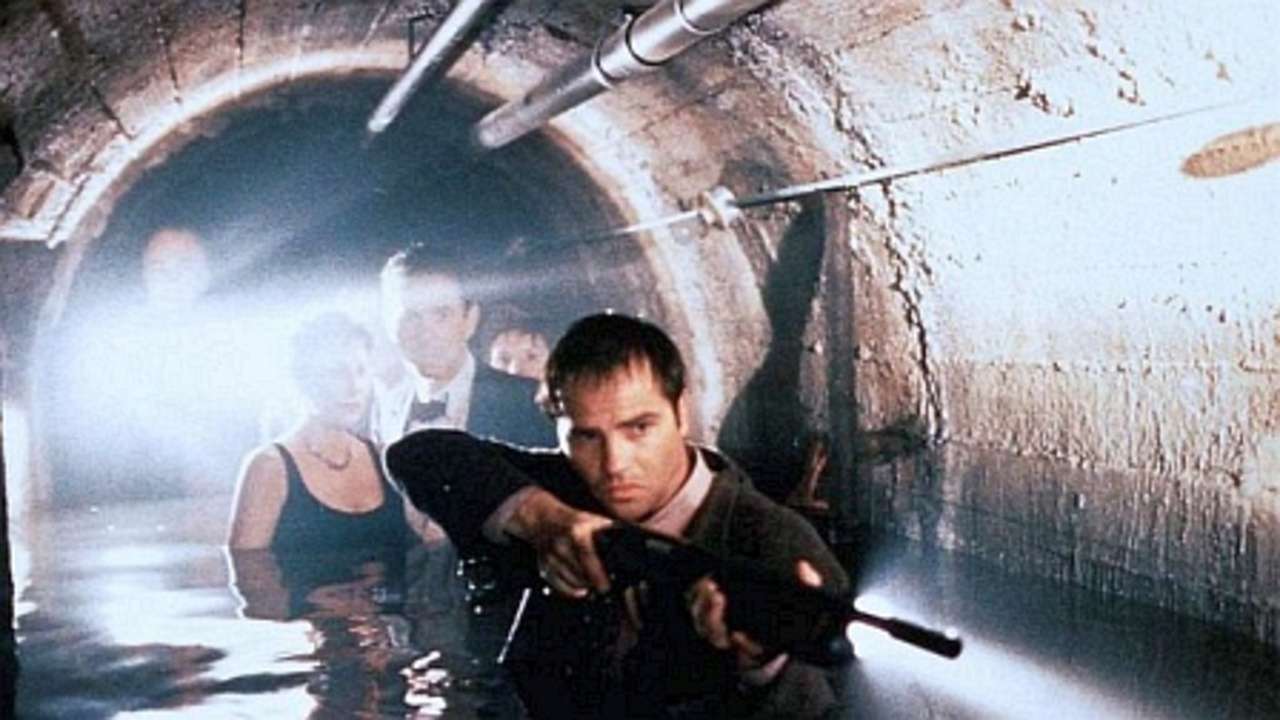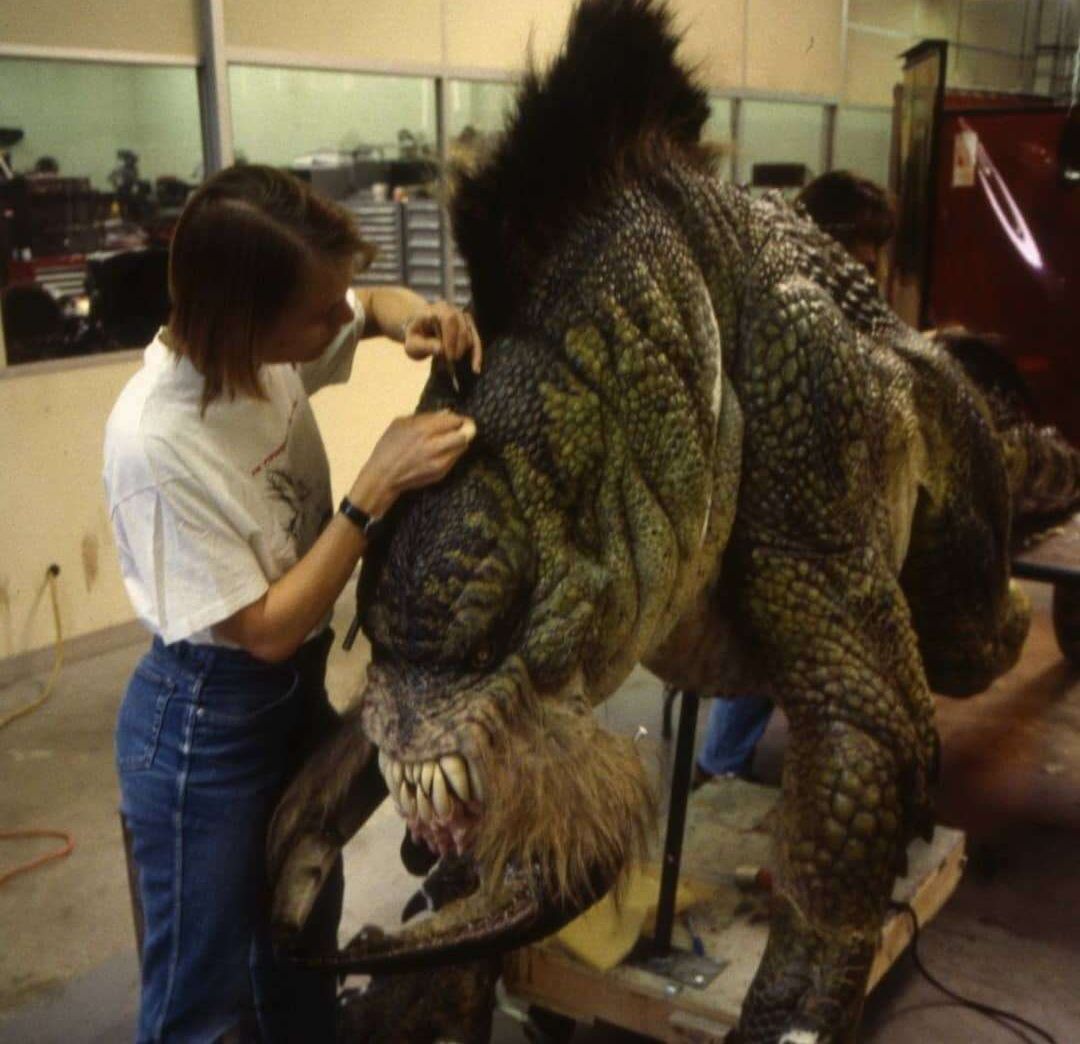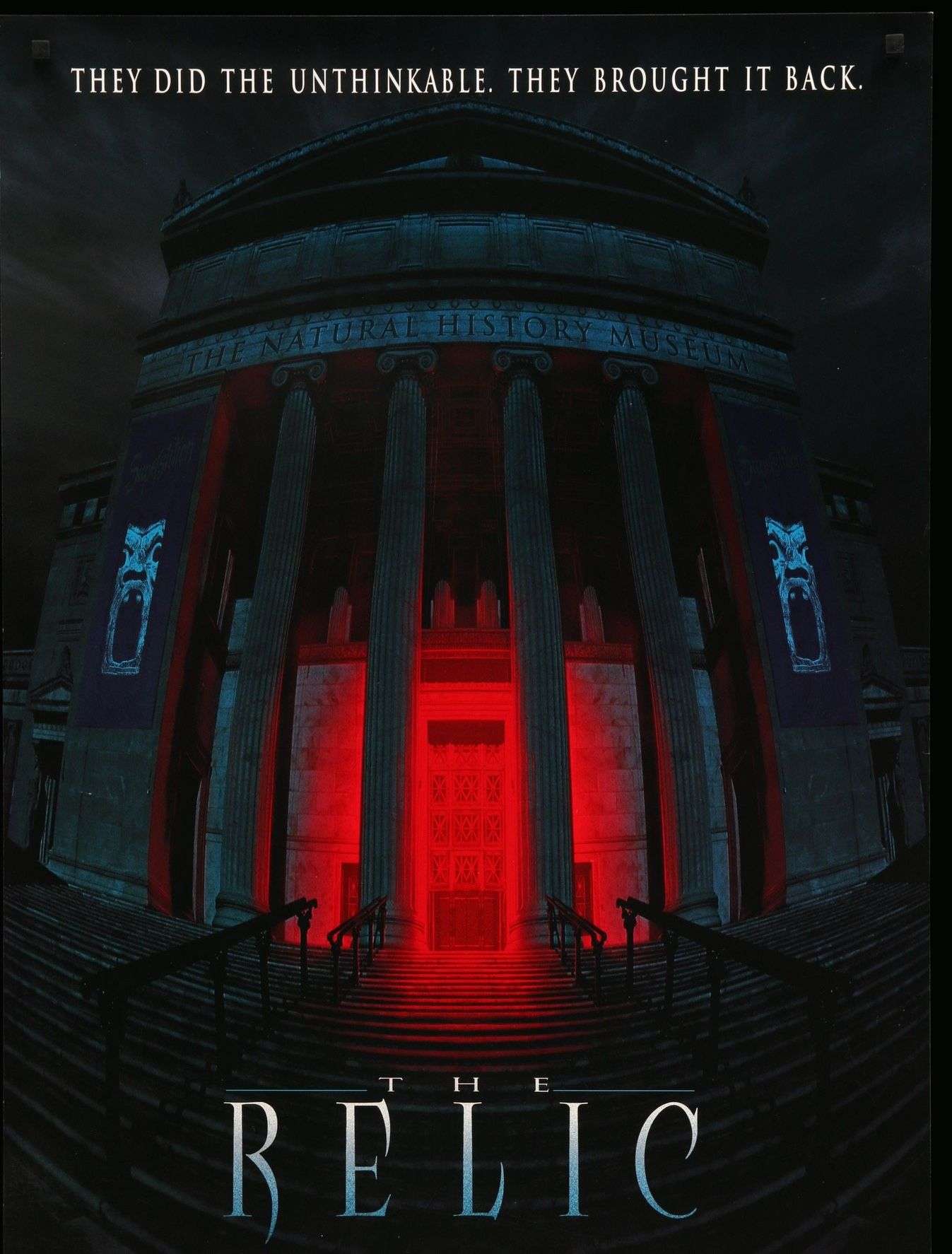Exploring terror is a difficult task! What is it that you are most afraid of? In a nutshell, we may sum it up as something unknown. This is precisely the premise that makes monster features and sci-fi thrillers so successful, as Alien and Predator demonstrate.
When Peter Hyams directed The Relic in 1997, he intended to work his magic on the same thing, and boy, did he succeed! The monster hunted down its victim while lurking in the darkness and shadows, and it was fascinating to see the monster hunt down its prey while lurking in the darkness and shadows. The sense of wonder was palpable, and seeing the beast for the first time was just magnificent!
We’re going to take you inside the dreaded country of Kothoga in this video. We’ll look at the film and then take a look at the novel from which it was based. Don’t gaze towards the dark corners of the room! Sit tight! You never know what’s hiding around the corner!
The Story Of The Kothoga Begins Here!

The movie begins in a gloomy atmosphere, in which we are immersed in the wildness of a distant Brazilian jungle. John Whitney, an anthropologist, is observing a tribal rite and appears to be in a trance. He consumes a bizarre soup that the tribesmen had made using leaves that have a crimson fungal growth on them.
He consumes the soupy potion, and is consequently gripped by paranoia. The sight of one of the natives wearing bright face paint terrifies him, and the tribal group seems to enjoy his condition.
In the following scene, we see John rushing to a pier. He begs the captain to unload one of his containers that is intended to go to the Chicago Natural History Museum from a cargo ship that is about to leave. The captain is preoccupied with his work and is running late, so he declines John’s demands.
He boards the ship and assures John that his goods will be handled carefully, but John is plainly not convinced. As the ship departs for its destination, he manages to slip aboard. He gets to the cargo hold and searches for his crate, eventually finding and opening it. Disappointment awaits him because there is nothing but rugs inside, and John screams in agonizing pain.
Clearly, there was something in the box that was urgently required by him! We get the true picture of the situation when we see that there are some more crates lined up at the dock. These are also labeled John Whitney – Chicago Natural History Museum, and there seems to have been an error during the transfer. We soon see the effects that this error has on the crew of the ship!
The tale picks up six weeks later, with the ship docking in Chicago. This time, though, the mood is more solemn, and the dock has been blocked off by police. Lt. D’ Agosta is in charge of the investigation, and he and Detective Hollingsworth investigate the ship.
There has been a massacre on board: blood is strewn everywhere, and the staff have been slaughtered. Lt. D’ Agosta is quite a superstitious man himself, and he doesn’t rule out something that doesn’t fit logical explanations.
The storyline then shifts to the Chicago Museum of Natural History, where a new display is about to debut. Dr. Margo Green is an evolutionary scientist, and the museum curator tells her there’s a possibility she’ll get her hands on the funding she wants.
It is being given by the museum benefactors, The Blaisedales, who happen to be attending the grand opening for the special exhibit. This grant is very dear to Margo because it would allow her to complete her research.
Dr. Albert Frock, a colleague of John Whitney’s, is Margo’s mentor, and he is perplexed by the contents of several crates carried by air freight from Brazil. These are the identical ones that the ship left behind, and all they have is a stone statue of Kothoga, a fabled forest monster, perched on some leaves. Margo chooses to examine the leaves closely since they have a fungus developing on them.
Meanwhile, two schoolboys decide to skip class and sneak into the museum with a school group on a field trip. They hide in the museum, where they are greeted with a foul odour emanating from the basement stairs after it has closed. They come across a guard who has had his head chopped!
The youngsters are afraid, and the authorities are notified as soon as possible. Everyone believes there is a serial killer on the loose. Lt. D’ Agosta is summoned once more, and he begins his investigation into the crime.
When the coroner examines the guard’s body, he notices that the brain is lighter than it should be, and that the hypothalamus in the brain is absent. All this while the stone artifact is being restored, and Dr. Albert Frock sheds some more light on the Kothoga, the mythical creature that was created by combining various animals into one.
Lt. D’ Agosta is present as the body is being examined, and he later discovers that even the dead crew members on board had some parts of their brains missing.
The police believe the assailant is still on the premises, so they undertake a thorough search. They are surprised by a homeless man living in the basement and murder him by mistake. After discovering the guard’s purse with him, he is revealed to be an ex-convict accused of rape and felon, and everyone believes he is the one who murdered him.
Lt. D’ Agosta, on the other hand, is not convinced since the missing hypothalamus in the deceased body remains a mystery. He wants the opening event to be kept on hold, but eventually, he bows under pressure.
Some prominent personalities, such as the Mayor and his wife, are on the list of guests who would attend the event, and it must go on as planned. He still ensures that there is a heavy police presence for it.
The big day starts off well, with Margo successfully studying the leaf. She discovers a relationship between the human hypothalamus and the plant chemical. The red fungus-like object had a highly concentrated amount of the hormones secreted by the hypothalamus, and it can trigger catastrophic alterations in species who consume it.
The leaves were stored in a container, and a beetle somehow got inside. It then grew as big as a rat within a night, and the findings shocked Margo and Frock. After killing the giant beetle, they analyze the beetle’s DNA, and the professor comes up with a theory called the Calysto Effect. According to this, the product causes a sudden jump in evolution, creating a new species that is a mixture of many.
D’Agosta orders his troops to examine the museum’s tunnels and sewage systems, but an unknown entity assassinates one of the K9 officers and his dog. D’Agosta recognises the seriousness of the situation and directs Detective Hollingsworth to immediately evacuate the museum. But it’s too late; the VIPs have already entered the exhibition.
As people pour into the hall, the decapitated body of a killed police officer falls unexpectedly, causing fear. In the chaos, the alarm of the museum is set-off, causing the security system to trap a group of people inside.
The power trip fails as well, and two security guards who try to fix it are killed by an unknown creature. SWAT teams land on the roof, and Lt. D’Agosta orders the trapped guests to head into the tunnels as they head outside across the street.
The museum’s donors, the wealthy Blaisedales, opt to remain in the main hall, and the ambitious Greg Lee joins them to stay in their good graces. Even the security chief is still with them, but the monster attacks again. They’re all taken by the Kothoga, and we finally get a good look at the terrifying beast. As it decapitates the SWAT unit that was dumped into the hall, we glimpse its real might and agility.
It can scale barriers, move quickly, and is an unstoppable killer! Margo and Dr. Frock are in another part of the building when they discover the monster’s actual identity. It turns out to be a hybrid of reptiles, insects, and other animals, and it even has traces of the missing John Whitney!
It is clear that he has been turned into the mythical Kothoga, and now to survive, he must consume generous doses of the hormone that is only found in the human hypothalamus. Without the leaves to eat, there was no option for the creature but to kill humans continuously.
The tribe probably came up with the idea to create a Kothoga to eliminate any threats to their existence. They would simply hide when the creature was active and killed the threat, and simply wait till it died of starvation. With so many available prey, starvation is clearly not going to bother this particular Kathoga!
When the creature attacks, Dr. Frock is slain, but Margo survives. D’Agosta and her come up with a plan to kill it, and she recommends liquid nitrogen. Because the species is reptilian in nature, it should be vulnerable to extremely cold temperatures. However, the scheme fails, and the lieutenant attempts to entice it with the remaining leaves.
The Kothoga proves to be more intelligent than they expected, breaking through the roof of the lab where Margo is hiding. Margo utilises the combustible chemicals in the lab to blow it up in a desperate attempt to free D’Agosta.
The creature is up in flames, but it still gives chase, almost getting to Margo, but she hides in the maceration tank, which is a giant metal container that is filled with water. She escapes the explosion, and we see the Kothoga blown to pieces.
Finally, a police team led by D’Agosta breaks in and finds the remains of the monster. They rescue Margo from the tank, and it finally looks like the nightmarish horror of the Kothoga has ended for good!
Our Take on the Movie

Filmmaking is smooth and flashy when an excellent cinematographer wears the director’s hat. With his superb photography talents, Peter Hyams promises the same in this evocative and terrifying monster feature.
Some of the scenes may appear to be a little too gloomy, but that is exactly what the filmmaker intended! He willingly played with the terrors associated with what you cannot see clearly, but it became a problem when people watched this movie at home. Some scenes were so dark that they could barely see anything, and it was only after the Blu-Ray release that this problem was resolved.
Although the concept isn’t innovative, the narrative does a good job of masking the clichés. The combination of a confined atmosphere and a lethal beast on the prowl is just great. The suspense will keep you on the tip of your seat, and the climax drama will give you a surge of adrenaline.
The plan to shoot the Kothoga mostly in silhouette worked wonders, and the deliciously eerie fast-paced storytelling will impress everyone. The two leads, Penelope Ann Miller and Tom Sizemore, deliver power-packed performances, and the creature effects will leave you stunned! Overall, it is a genuinely haunting monster drama and deserves a lot more appreciation than it gets.
How the Kothoga Was Created?

Many have compared this film to Jurassic Park meets Alien, and they are not far off. The involvement of famed creature effects guru Stan Winston in the production was extremely beneficial.
Stan Winston Studios has the advantages of inside sets and soundstages because of its indoor structure. It was always going to be difficult to create such a unique monster because audiences had never seen anything like it before!
The concept artist, Mark McCreery, made a few sketches based on the descriptions from the book. The director, Peter Hyams, picked his favourite, and that is how we got the intimidating mythical beast at 15 feet long! The creature looks like an amalgamation of an alligator, a lion, and a horse topped with reptilian scales all over its body.
Stan Winston Studios created three Kothoga suits, each with a radio-controlled head to guarantee that the human anatomy of the person within was well hidden. The sculpture was made out of water-based clay and then moulded in foam latex.
The hair along the spine and on the skull is Yak hair, while the fangs and mandibles were manufactured separately. For smooth movement, the arms and legs involved some mechanical extensions, and these were engineered by one of the finest artisans in the business, Kirk Skodis. Other motions of the head and neck were controlled by animatronic systems.
While the majority of the movements were controlled by radio, the tail was not, and it was manually controlled by puppeteers using wires. Some of the stuntmen had been training for months to grasp the predatory behaviour and motions. All of these factors combine to create a terrifying image of the brain-eating Kothoga.
How The Movie Was Different From The Book?

Many people read Lincoln Child and Douglas Preston’s best-selling novel before viewing the adaptation, and practically all of them believe that the book version is better in several aspects! But isn’t it true of most books and movies?
When Peter Hyams was approached about making a film based on the narrative, he leaped at the possibility. He was always fascinated with movies like Alien, and as a child, he had a very disturbing dream of being trapped in a museum. The story provided him the ideal opportunity to explore his deep, dark fears and offer a tribute to classics like Alien and Predator.
But, of course, a film adaptation needs a few tweaks here and there. There are several changes in this case, the first of which is the change of location from the New York Museum of Natural History to the Chicago Museum of Natural History.
The production team planned to shoot in New York, but they were denied permission since the museum had just had a horrible experience with a shooting crew. Besides, they were apprehensive about kids who might be scared to visit the institution after watching the film because much of the horror takes place inside it.
The movie gives you a significant tip about what’s going on right at the start of the story! This detracts from the tension that the novel managed to maintain throughout. In fact, they only revealed the twist at the end when they explained everything. The makers could have certainly taken this route, and it could have been an even more exciting film than it already was.
The monster was one of the most significant alterations that the film had to make. You know, you can build a picture in your head when you read anything, but a film does it right in front of your eyes! As a result, authors can get away with depicting a lot less scary items since you’ve already envisioned the deadliest thing imaginable in your head.
The filmmakers cannot really take the same route. This is why they made the monster far more menacing than what was described in the books. They even changed its name- in the book, it is called Mbwun, and in the movies, you see it as Kothoga.
On the big screen, the Kothoga seems much larger, and the insect-like characteristics and mandibles coming from its face were added by the creators. It seems more like a huge four-legged reptile hunting its prey. We realise there are many opinions on this one, but we feel the film did the vicious creature justice in the greatest way possible!
Whenever a novel is adapted into a film, the characters suffer the brunt of the criticism. Even in this scenario, the majority of the persons and their characteristics were altered. In the novel, Margo Green is an introverted graduate student, yet you view her as an imposing evolutionary biologist.
While Lt. D’Agosta appeared to be a charming and athletic figure on screen, the original text depicted him as an obese middle-aged guy. Key character Agent Pendergast was omitted, with some of his traits given to Lt. D’ Agosta.
They changed a number of the people who survived into ones who were hunted by the Kothoga. It is indeed difficult to accommodate as many characters as a book can, so it is somewhat unfair to show this as a flaw!
There are other aspects of the work that are lacking, such as societal criticism. However, we believe that such events may have tainted moviegoers’ enthusiasm to some extent. True, the cast of the novel is significantly more accessible, but there isn’t nearly enough time in a monster movie to gradually introduce new characters.
In a nutshell, there are changes that we liked and changes that we felt weren’t necessary. But all in all, The Relic still stands as a fascinating movie, and we believe that is what ultimately matters!
